|
|
|
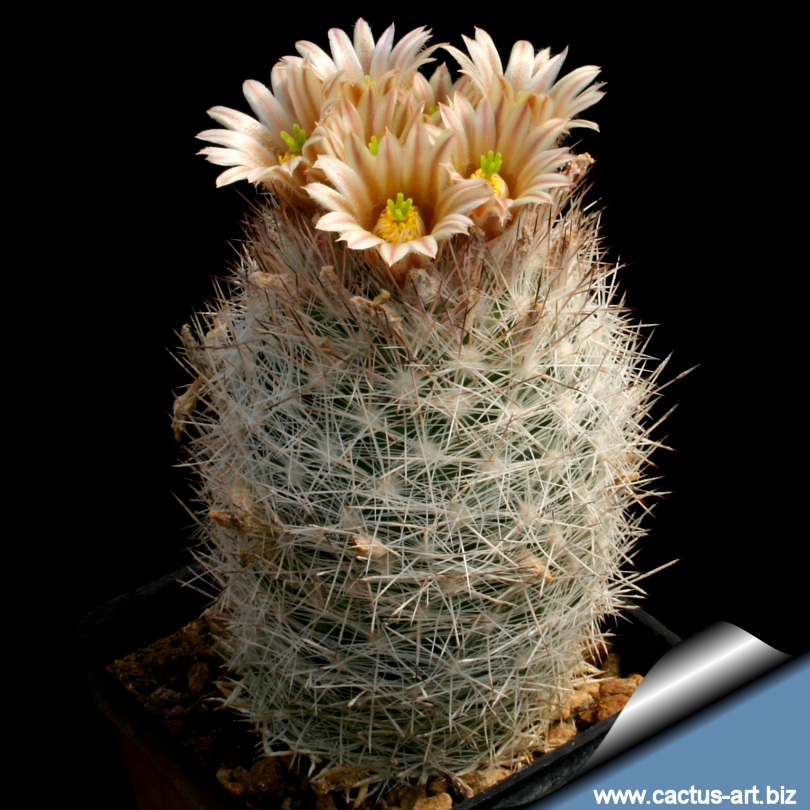
Escobaria dasyacantha SB907 Otero Co, NM. USA
|
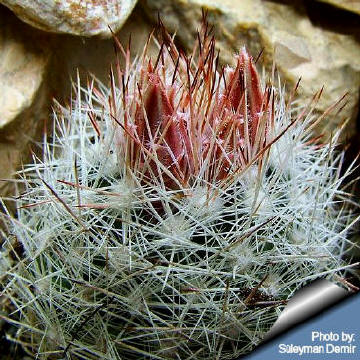
Photo &
© copyright
by
Süleyman Demir Turkey
Home page:
http://community.webshots.com/user/demir165
Apex with flowers bud
|
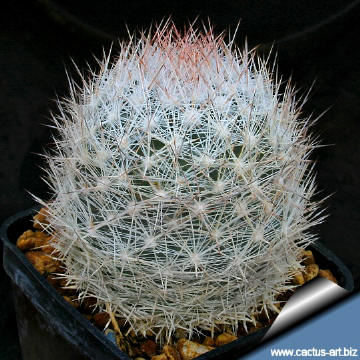 |
Description:
E. dasyacantha is small nipple Cactus forming solitary (or rarely with
2-5 branches) condensed upright cylinders densely covered with white
spines with darker tip.
Stems: Spheric, becoming short cylindric in age, 4.5-15 × 3-6 cm
Tubercles: 7-8 × 3-5mm, moderately soft.
Spines: pure white to brown bristly with pink, red-brown to
nearly black tips 26-42 per areole; radial spines 21-31 per areole 6-10
mm long; subcentral spines several, appressed; central spines (4-9 per
areole, spreading, straight, longest spines 12-17 mm.
Roots: Diffuse or whit ashort taproot.
Flowers: nearly apical, 15-30 mm, outer tepals pinkish
conspicuously fringed with darker pinkish to brown or brownish green
midstripes. Stigma lobes are greenish. Blooming: March-July.
Fruits: Bright red, clavate, cylindric, or narrowly ellipsoid,
13-35mm long not very succulent; floral remnant strongly persistent.
Note: This species is frequently misidentified the ripe
fruits, with strongly persistent floral remnant provide the only simple
way to distinguish E. dasyacantha from
C. duncanii, while the black fresh seeds of E dasyacantha
and related species usually provide immediate distinction from
E. tuberculosa,
E. sneedii, and
E. vivipara, which have differently shaped, bright reddish brown
fresh seeds. In addition, the greenish stigma lobes of C. dasyacantha,
C. duncanii,
C. chaffeyi, C. pottsiana, and certain Mexican taxa contrast
with the violet or white stigma lobes of
C. vivipara, C. sneedii, C. alversonii, and C. hesteri.
Cultivation:
Easy to cultivate in a very gritty substrate
with much drainage. Water regularly in summer, but do not overwater
(very rot prone), it prefer a completely dry place during winter . An
unheated greenhoouse would be perfect. It can survive low temperatures (appr.
-12 C).
Full sun to light shade.
Propagation: Seeds (no
dormancy requirement, they
germinate best at 25°C in spring ) or usually by
offsets (readily
available),
or occasionally
grafted.
|
|
Photo of conspecific taxa, varieties,
forms and cultivars of plants
belonging to the
Escobaria tubercolsa
complex
(This
Taxon
has lots of synonyms whit
several controversial varieties and subspecies and comprises a multitude
of different forms, but where each form is linked to others by
populations of plants with intermediate
Advertising
|
|
|
|
Conservation status:
Listed in
CITES appendix 2.
Scientific name:
Escobaria dasyacantha
(Engelm.) Britton & Rose
subsp. dasyacantha,
The Cactaceae, 4 : 55, fig. 52 1923
Geographic Range:
USA (southern New Mexico, west Texas),
Mexico (Chihuahua, Coahuila, Zacatecas
Habitat: in grasslands, desert
scrub and open oak woodlands over igneous soils and perhaps limestone,
gravely bajadas, silty flats; at moderate elevations 600-1900 m in
Chihuahuan Desert Mountains.
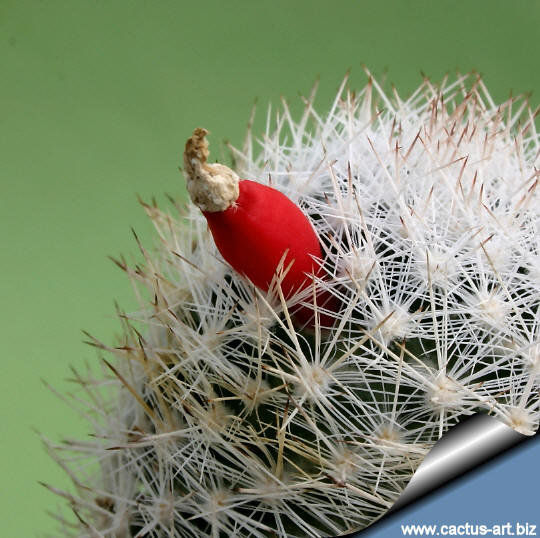
|
|
|
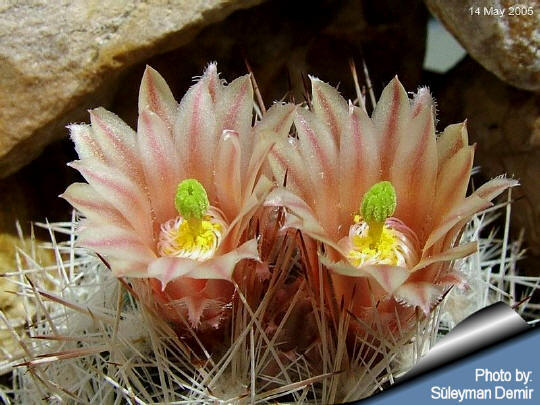
Photo &
© copyright
by
Süleyman Demir Turkey
Home page:
http://community.webshots.com/user/demir165
Easily recognizable for the up-facing pink flowers with greenish
anthers that crowd the apex of the stem in spring, these are followed by
attractive long bright red fruits.
|
Taxon
synonyms:
- Mammillaria dasyacantha
Engelmann, Syn. Cact., 268, 1856, fig., 1859
- Cactus dasyacanthus
(Engelmann) Kuntze, Rev. Gen, 1 : 259, 1891
- Coryphantha dasyacantha
(Engelmann) Orcutt, Circular to Cactus Fanciers: p.i., 1922
- Coryphantha dasyacantha
(Engelmann) A.Berger, Kakteen, 280, 339, 1929
- Escobesseya dasyacantha
(Engelmann) Hester, Desert Pl. Life, 13 : 192, 1941, sine descr. lat.;
et in Desert Pl. Life, 17 : 25, 1945; cf. Gray Herb. Card Cat.
- Thelocactus dasyacanthus
(Engelmann) W.T.Marshall, Cact. Succ. Journ. (GB), 9 : 28, 1947
|
|


|
|